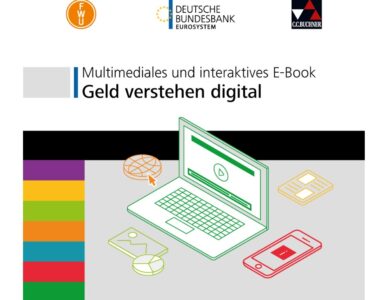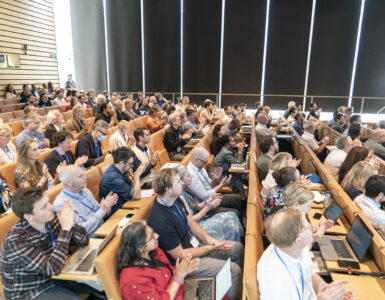by Nicola Fern, Senior Digital Learning Developer, Durham University, UK.
XR technologies have been on the cusp of mainstream adoption for several years now; this wave seems to be finally building toward more widespread use of these media in our personal, professional, and educational lives. While the earlier (and much more expensive) Oculus Rift hadn’t hooked me in, due to its need for a powerful gaming level computer and tethered experience (I’m very clumsy, and would definitely hurt myself with that one), the Oculus Quest did. I bought one shortly after it was released and haven’t really looked back.
I found it transformative. As someone who isn’t a ‘gamer’, it has brought flat and unengaging 2D gaming into something much more immersive and less mediated – leaving me feeling like I’d had a real experience, and been to a different place. It was particularly good for my mental health, both while finishing my Master’s, and during the pandemic.
There is enormous potential in XR for learning – it can transport us to impossible-to-reach locations, let us see inside the workings of cells or travel the solar system. Improved interaction mechanics now allow us to rehearse skills in similar ways to real life, even using just our hands instead of controllers.
I’ve recently begun studying for a PhD focusing on immersive VR and its use as an educational medium in HE. It’s a difficult subject to pin down in many ways, given the sheer volume of work going on in this space – there’s certainly enough reading to do! As a subject, it encompasses multiple subject areas including game design, storytelling, pedagogy, and human-computer interaction. It is still a lightly-evidenced technology in HE – and it has a high barrier to entry in terms of development time and cost if you’re going to build something bespoke. There are a number of pre-built games and applications worth evaluating, but most are not specifically designed for education.
Research gaps
Defining the field
One of the greatest challenges in a new field, especially one that sees so much technological change, is defining what exactly is meant by core terms. XR tech has evolved from desktop-based multimedia learning and games, and as such the research includes a mixture of terms that have become somewhat muddled. For example ‘VR’ as discussed in research can mean:
- A 3D game played on a 2D monitor
- A ‘CAVE’ room that allows you to visit a virtual space projected on the walls
- A headset-mounted smartphone with controls on the side
- An experience in a dedicated VR headset such as an Oculus Quest 2
Similarly, levels of immersion are inconsistently defined, with ‘highly immersive’ being ascribed to any one of the above examples at one point or another. This confusion makes it hard to identify comparable research examples. I use the term iVR to specify at minimum headset mounted experiences with dual controllers, as this set up allows the current highest common level of fidelity.
Approaches to educational design
How best to design immersive VR experiences specifically for education purposes is a focus of much current research. Some studies are focusing on extending, adapting or validating elements of pedagogy related to designing multimedia learning, such as CATML (the Cognitive-Affective Theory of Multimedia Learning) and cognitive load theory.
Particularly at issue at present is:
- Whether iVR is inherently a high cognitive load medium, which could harm learning (Makransky et al. 2019)
- What level of realism or fidelity is desirable or sufficient for learning (Radianti et al. 2020)
- What level of interaction is optimal for learning (Pavic et al. 2022)
- If specific fields are especially suitable for learning with iVR (Coban et al. 2022)
Many studies don’t have a pedagogic basis for their approaches at all (Radianti et al. 2020), and they tend to study a limited range of interactions from fairly static e.g., being able to look around while watching a VR scene or 360-degree video, to minimally interactive, e.g. being able to walk around a space and initiate a video presentation or look at objects (e.g. Ahn et al. 2022, Petersen et al. 2022).
Novelty and pre-training
Studies involving iVR often have a large number of subjects who have either never used it, or have only rarely used it. It is also often studied in short timeframes. This leads to questions surrounding whether:
- The novelty of the experience increases learning retention because feelings of presence are heightened (which might wear off with time, reducing potential learning), or
- The novelty of the experience is a distraction (which could also wear off with time, increasing potential learning)
The use of pre-training or pre-exposure is of particular interest to me; VR naivety is often glossed over. I feel this could be impacting on the higher levels of cognitive load reported in some studies.
VR in context
Most of the studies done in iVR have been small to medium scale, and outside of the curriculum context. This means that in general, studies tend to be looking at testing with a general population of students rather than a subject-specific cohort that might have more in-depth knowledge of the material used. They are also missing a broader curriculum to support effective learning, and assess its efficacy in comparison with established teaching methods.
Most of the studies I have looked at so far don’t approach the issue of accessibility, which is something I hope to be able to embed in my research as far as possible. This lack may be because it’s hard to gather a big enough cohort to adequately assess the impact of accessibility features. Meta does have some excellent guidance on building accessibility into VR experiences, representing a very useful starting point for work in this area.
Examples
Here are some really nice experiences and programs available if you want to have a play and test out some iVR apps that might be suitable just for fun, or for more serious teaching.
- Lost Recipes is a great educational game about historical recipes from different ancient cultures. It’s one of the few games to have a really solid pedagogic design, and excellent embedded accessibility features.
- Titans of Space Plus is a tour of the solar system. It has a narrator who actually sounds like a person (though it does tend to the lecture-style instruction, but in space). It also includes some great graphics and use of scale. This is the app that was used in Huang (2022).
- Nanome is an app for chemistry, including building 3D molecules and simulating proteins. It’s designed for industry, but can also be used for education.
- Vermillion is an oil painting studio, with embedded YouTube video tutorials. It has a really serene environment and features natural media brushes and painting techniques.
- Noda is a 3D mind mapping tool that can be used collaboratively
- Gravity Sketch is a full featured 3D design, modelling and painting tool that can be used to make exportable 3D objects and designs.
Recommended reading
Apart from the papers I’ve referenced already, I do have a shared version of my VR-focused Zotero library, which you are welcome to view. I keep this up-to-date with new resources as I find them.

Author
Nicola Fern, see: www.nicolafern.com
Senior Digital Learning Developer in the Durham Centre for Academic Development (DCAD)
Durham University, UK.
Bibliography
Ahn, S.J.(grace)., Nowak, K.L. and Bailenson, J.N. (2022). Unintended consequences of spatial presence on learning in virtual reality Computers & education, 186, p.104532.
Coban, M., Bolat, Y.I. and Goksu, I. (2022). The potential of immersive virtual reality to enhance learning: A meta-analysis. Educational Research Review, 36, p.100452.
Huang, W. et al. (2022). Extending the Cognitive-Affective Theory of Learning with Media in Virtual Reality Learning: A Structural Equation Modeling Approach. Journal of Educational Computing Research, 60(4), pp.807–842.
Makransky, G., Terkildsen, T.S. and Mayer, R.E. (2019). Adding immersive virtual reality to a science lab simulation causes more presence but less learning Learning and Instruction, 60, pp.225–236.
Pavic, K. et al. (2022).Because I’m happy – an overview on fostering positive emotions through Virtual Reality Frontiers in Virtual Reality, 3.
Petersen, G.B., Petkakis, G. and Makransky, G. (2022). A study of how immersion and interactivity drive VR learning. Computers & Education, 179, p.104429.
Radianti, J. et al. (2020). A systematic review of immersive virtual reality applications for higher education: Design elements, lessons learned, and research agenda.. Computers & education, 147.














